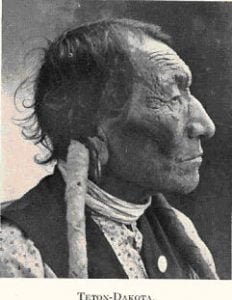Dakota Indian Names and Writing
The names of the Sioux bands or villages, are as fanciful as those given to individuals. Near Fort Snelling, are the “Men-da-wahcan-tons,” or people of the spirit lakes; the “Wahk-patons,” or people of the leaves; the “Wahk-pa-coo-tahs,” or people that shoot at leaves, and other bands who have names of this kind. Among those chiefs who have been well-known around Fort Snelling, are: Wah-ba-shaw The Leaf Wah-ke-on-tun-kah Big Thunder Wah-coo-ta Red Wing Muzza Hotah Gray Iron Ma-pe-ah-we-chas-tah The man in the Cloud Tah-chun-coo-wash-ta Good Road Sha-ce-pee The Sixth Wah-soo-we-chasta-ne Bad Hail Ish-ta-hum-bah Sleepy Eyes These fanciful names are given to … Read more

